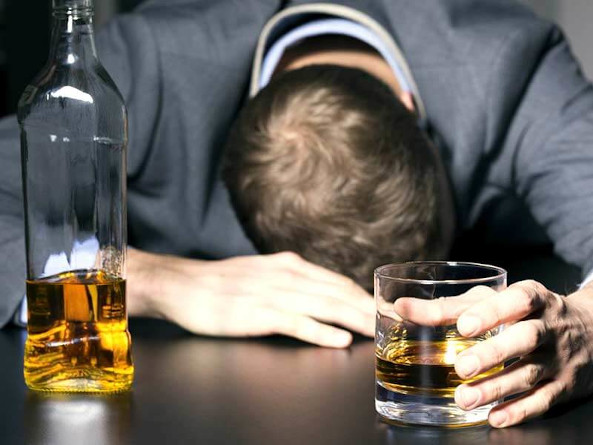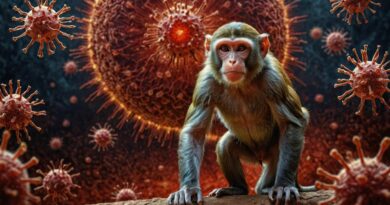Alcohol – A Major Health and Social Problem
The alcohol is an age-old beverage created with different processes to give a high in the mind. Wines are produced by the action of yeast on fruit juices. They contain 10-20 percent alcohol. Beer and ale have a lower alcoholic content. They are made by the action of yeast on a mash containing ground grain and malt. Whiskey, brandy, gin, rum, vodka, and liqueurs are distilled beverages, which have a much higher alcoholic content, usually 40-55 percent. Naturally, the effect of an alcoholic beverage on the body depends largely on the amount of alcohol the drink contains.
Alcohol in the Body
Within two minutes after drinking it, alcohol begins to leave the stomach and enter the blood. It is not digested. The blood receives (absorbs) it without any change. The rate of absorption speeds up greatly as alcohol enters the intestine at the lower end of the stomach. When alcohol is mixed with food, the rate of absorption is reduced. This explains why a person feels the effects of alcohol more quickly if he drinks on an empty stomach than if he drinks during or after a meal.
The blood delivers alcohol to the brain, liver, muscles and other body tissues. Here it is absorbed in the water the tissues contain. Body tissues normally “burn” part of the digested foods by the chemical process oxidation. This is similar to what happens when a piece of wood burns in air. Energy is released from the wood is used to keep the tissues alive. The speed of food oxidation depends on the energy on needs. If a person runs around the block, oxidation speeds up. If he takes a nap, it slows down.
How Do We Fight An Alcohol Fire?
Blood picks up heat in the tissues and carries it to the skin. The skin turns pink (flushes) with its extra blood supply. Heat pours from the skin surface. The nerves in the skin send forth an impression of body warmth, but the warmth is all on the surface. Capillaries in the skin enlarge and give off excess heat. Many people are fooled by this false feeling of body warmth registered in the skin.
The average adult can oxidize only about one tablespoonful of alcohol in his tissues in an hour. At this rate, it takes nearly twenty-four hours to use up the alcohol in a pint of whiskey.
Psychological Dependence on Alcohol
People who are unhappy, insecure, maladjusted and frustrated seek various escapes from their problems. Alcohol is a common means of escape. This is one of the dangers of even moderate social drinking. Often, a person does not enjoy the alcohol he consumes, but under its influence, he feels carefree and relieved of his burdens. If he thwarted or rejected in life, he may important and dominating under the influence of alcohol. But then periods of drinking, he is more depressed than ever. For this reason, drinking as a means of psychological escapes becomes more and more frequent.
Alcohol Psychosis
About one in ten cases of alcoholism progress to the seriousness of alcohol psychosis, an acute form of mental illness whose victims must be admitted in a hospital. Alcohol psychosis is caused due to the toxic effect of alcohol on nerve tissue. This would account for the general deterioration of parts of the brain. Another cause is a deficiency in the B-complex vitamins essential for normal nervous activity.
The victim of alcohol psychosis becomes confused to the point that he may not be able to recognize members of his family or even know who he is. This confusion is accompanied by terrifying hallucinations, mostly involving visual horror. We refer to these as delirium tremens.
Alcohol and Accidents
How does alcohol lower driving efficiency? Here are eight ways:
- It gives a false feeling of security. The drunken driver thinks he’s the best driver on the street.
- It makes him discourteous. The drunken driver seldom gives right-of-way. He is often bullheaded and hostile.
- Alcohol increases reaction time. The driver takes longer to put on the brakes or swerve to avoid a collision.
- The drunken driver can’t see well or judge distance.
- He doesn’t pay attention. His mind is on everything but driving.
- It is harder for the drunken driver to associate danger signals with danger. Stoplights, stop signs, and railroad flashers don’t have their ordinary meaning.
- Stimulants, such as coffee, will not offset or reduce the effects of alcohol on the brain.
- Drinking to any extent reduces the ability of any driver.
Alcohol and Crime
Alcohol is often associated with some crimes include disorderly conduct, assault, robbery, burglary, sex crimes and murder. Alcohol is closely associated with crime and violence because its use results in behavior without intelligent control. People behave differently under the influence of alcohol. Their actions depend on their emotional make-up and attitudes. Someone who is basically mean and resentful may become brutal when his emotions are let loose. The attitude of the criminal toward society is resentful and ruthless. Often, he is a coward until alcohol gives him a feeling of brute power.
Get updates and read additional stories on the Health Orbit Fan Page.
For Guest posts, Sponsored posts and other details, please click ‘Contact Us’ page.





Pingback: What Happens to the Body When You Stop Drinking Alcohol? - Medical & Health News Update| Health Orbit